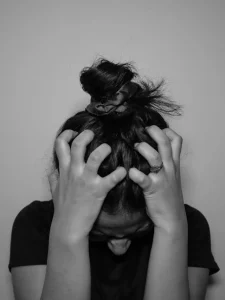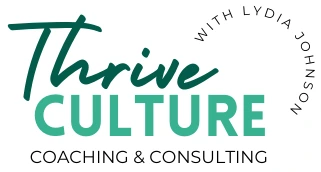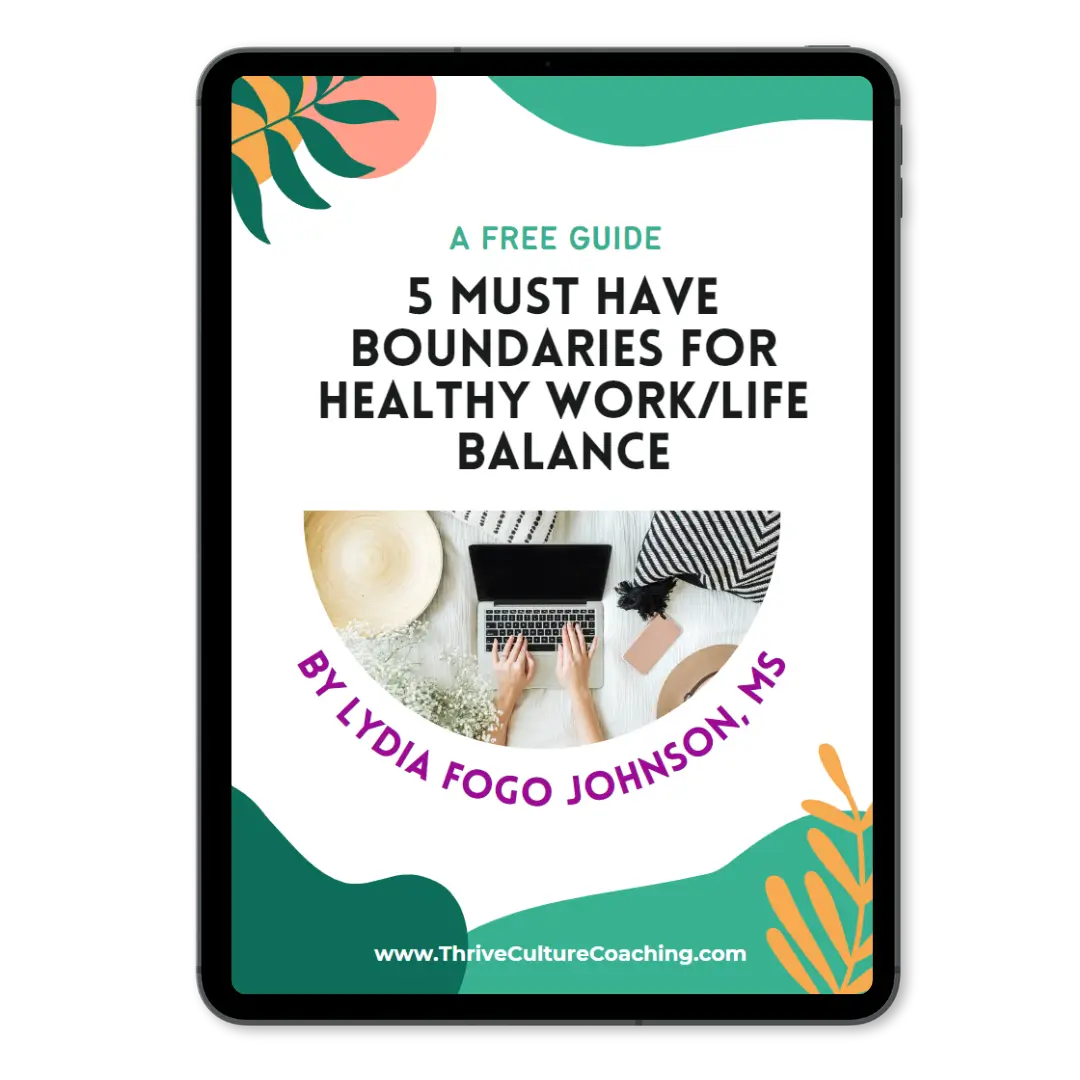Table of Contents
- Introduction
- Why Burnout Alone Doesn’t Qualify You For Medical Leave… But Other Conditions Do
- FMLA Basics: Who It Covers (and Who It Doesn’t)
- Mental Health Conditions That Can Qualify for FMLA Leave
- State-Level Paid Leave Options
- Other Leave Options Are Available for Burnout
- Sick Leave
- Short-Term Disability Insurance
- Case-by-Case Unpaid Leave
- What to Expect During Leave
- Couch Recovery Is Real
- This Is Not the Time to Upskill
- Professional Burnout Help Is Essential
- Prioritize Mental Health With the Basics
- How Long Burnout Recovery Might Actually Take
- It’s Not Just Exhaustion—It’s Depletion
- Leave Doesn’t Always “Fix” the Problem
- Recovery Isn’t Linear
- What Happens When You Return
- You Might Still Feel Fragile
- Old Patterns May Try to Sneak Back In
- You Might Need to Make a Bigger Change
- You Deserve to Recover—Not Just Cope
Introduction
At least once a month, I get a 2 AM email from a woman who’s on the edge. She’s usually a high-achieving leader, a working mom, someone who’s kept all the plates spinning for years. But now? She’s not just tired. She’s unraveling.
She’s asking: “Should I quit? Should I take a leave of absence? What are my options here?”
If you’re in that place, too—bone-deep exhausted, unable to think clearly, wondering how much longer you can keep pushing—you’re not alone. And you’re not broken. You’re burnt out.

As a burnout coach, I’ve walked with dozens of women through this exact decision point. Some have made sustainable changes inside their role and stayed. Others have taken time off to recover, and a few have ultimately chosen to leave. But the common thread? They all needed to pause long enough to actually assess what was possible.
This post will walk you through everything you need to know about taking medical or sick leave for burnout—what’s allowed, what’s not, and what recovery actually looks like. We’ll cover your legal rights, how to talk to your manager or HR, what happens if your body crashes during leave (spoiler: that’s more common than you think), and how to make the most of your time off—without expecting it to fix everything.
Why Burnout Alone Doesn’t Qualify You For Medical Leave… But Other Conditions Do
Unfortunately, in the US, burnout isn’t a recognized medical condition. According to the World Health Organization, it’s an “occupational phenomenon”—not a diagnosable illness. That means you can feel physically and emotionally wrecked and still not have an official basis for medical leave under that term. (Note that some other countries do allow burnout to be grounds for medical leave.)
But here’s where it gets more hopeful: many people who feel burned out are also struggling with clinical anxiety, depression, or other diagnosable mental health conditions. These conditions can qualify you for protected leave under the Family and Medical Leave Act (FMLA)—as long as certain criteria are met.
FMLA Basics: Who It Covers (and Who It Doesn’t)
FMLA allows eligible employees to take up to 12 weeks of unpaid, job-protected leave per year for a serious health condition. However, it only applies if you meet all of the following:
- You’ve worked at your company for at least 12 months
- You’ve logged at least 1,250 hours in the past year
- Your employer has 50 or more employees within 75 miles
If your company is smaller or newer—or if you’re a contractor, freelancer, or recently hired—you may not qualify for FMLA, though there may be other options (we’ll cover those later).
Mental Health Conditions That Can Qualify for FMLA Leave
Under FMLA, a “serious health condition” can include mental health challenges, especially when they interfere with your ability to do your job. This doesn’t just mean hospitalization (though that counts). You might be eligible for FMLA if you’re receiving:
- Inpatient care (like a mental health facility or hospital stay)
- Ongoing treatment (such as weekly therapy, psychiatric sessions, or prescribed mental health care that limits your capacity to function)
Even intermittent leave for weekly therapy can be protected under FMLA if your healthcare provider confirms that you’re medically unable to work during those times. (DOL.gov – Fact Sheet 28O)
And no—you don’t need to share your diagnosis with your employer. The documentation just needs to state that you’re being treated for a health condition that impacts your ability to work.
State-Level Paid Leave Options
Some states go further than FMLA by offering Paid Family and Medical Leave (PFML) for serious health conditions—including mental health. As of mid-2025, 13 states and Washington, D.C. offer these programs, including:
- California
- New York
- Oregon
- Massachusetts
These programs often replace a portion of your wages during leave and may provide job protections beyond federal law.
👉 More on PFML by state
👉 The State of Paid Leave in the U.S. – Center for American Progress
For example, Oregon’s program has helped thousands of workers take paid time off for health recovery, bonding, and more.
👉 How to Access Paid Leave in Oregon – Axios
Other Leave Options Are Available for Burnout
Even if you’re not covered under FMLA or a state-level paid leave program, there are still options worth exploring—especially if you’re trying to buy yourself some time and space to recover.
Sick Leave
If you’ve been accruing sick days, now’s the time to use them. In 18 states and Washington, D.C., employers are legally required to provide paid sick leave that can be used for both physical and mental health conditions—even if you haven’t received a formal diagnosis yet.
If your employer isn’t in one of those states, they might still offer a company-specific sick leave policy. Check your employee handbook or talk to HR. Using your banked sick time can be a short-term safety net while you explore longer leave options.
👉 See which states mandate sick leave
Short-Term Disability Insurance
Short-term disability insurance may replace 60–70% of your income for several weeks or months if you’re unable to work due to a covered medical condition. It’s usually offered through your employer, or you may have a personal policy.
However, burnout by itself is rarely enough to qualify. You’ll typically need:
- A formal diagnosis (like major depression, generalized anxiety disorder, or PTSD)
- Certification from a licensed healthcare provider stating that your condition renders you unable to perform your job
- A treatment plan (such as regular therapy or medication management)
Each insurer has its own policies, so check the plan details and speak with HR or your benefits coordinator for guidance.
Case-by-Case Unpaid Leave
If none of the formal options work, some companies may still offer unpaid leave on a discretionary basis. You won’t have legal job protection, but many HR teams will work with employees who are transparent about their needs and bring in medical documentation.
You can request time off for medical recovery without disclosing a diagnosis. A simple letter from your provider can state that time off is medically necessary due to a health issue that limits your ability to work. If you’re not sure how to approach this, a coach or therapist can help you craft a request that feels grounded, not desperate.
What to Expect During Leave
If you’re imagining that your time off will look like a relaxing sabbatical, complete with yoga classes, journaling, and maybe getting a certification… let’s pause right there.
Most of the women I work with don’t bounce into their best self the moment leave begins. They crash.
Couch Recovery Is Real

Once the pressure lifts, your body may shut down. It’s not laziness—it’s biology. You’ve likely been running on cortisol, adrenaline, and obligation for months (or years), and once your system realizes it’s “safe,” it collapses.
- You might sleep 10–12 hours a day
- You might feel numb, irritable, or emotionally flat
- You might have zero desire to “use this time productively”
This is normal. Your brain and nervous system are recalibrating from long-term stress, and that takes rest—not hustle.
This Is Not the Time to Upskill
If you’re secretly hoping to use your leave to revamp your resume, launch a side business, or catch up on personal development… I get it. But pushing productivity into your recovery time often backfires. It keeps you in the same loop of perfectionism, urgency, and overfunctioning that burned you out to begin with.
Give yourself permission to be still. Let the silence be uncomfortable. That’s where clarity starts to surface.
(Feeling like your self-care is struggling, too? You might be falling prey to faux self-care. Check out this article to explore the real deal of taking care of yourself.)
Professional Burnout Help Is Essential
Leave alone won’t heal burnout—especially if you’re not actively addressing the patterns or pain underneath it. Working with a therapist or burnout coach during this time is crucial. Here’s why:
- A therapist can help you regulate your nervous system, process trauma, or manage conditions like anxiety and depression
- A coach can help you understand your patterns (like people-pleasing, poor boundaries, or perfectionism) and build a sustainable plan forward
- Together, they help you make this time useful—not just tolerable
You don’t have to “fix everything” during leave. But if you don’t do any inner work, you risk returning to the same stress, with the same mindset, and landing in the same burnout cycle.
Prioritize Mental Health With the Basics
Before you try to solve big life questions or overhaul your career, start with foundational recovery habits:
- Sleep: Aim for deep, consistent rest. This might mean naps, earlier bedtimes, or removing screen time before bed.
- Nutrition: Burnout often leads to skipped meals or stress eating. Try to return to regular, nourishing meals—even if they’re simple.
- Movement: Gentle movement like stretching, walking, or yoga can help restore your nervous system and get you out of freeze mode.
- Connection: Isolation can deepen burnout. Reach out to people who make you feel seen, supported, or just safe to be around.
These basics won’t “fix” burnout—but they create a stronger foundation so healing can happen.
How Long Burnout Recovery Might Actually Take
Most people hope that two or three weeks of rest will be enough. And while that might get you out of total survival mode, real recovery from burnout often takes longer than you expect—sometimes, much longer.
It’s Not Just Exhaustion—It’s Depletion
Burnout isn’t just “being tired.” It’s full-body depletion—physical, emotional, and mental. Your nervous system has likely been in overdrive for months (or even years), and it takes time to come down from that.
In fact, one study found that even seven years after initial treatment, nearly half of those who had experienced stress-induced exhaustion still struggled with fatigue and reduced stress tolerance. That’s not to scare you—it’s to help you understand why you feel the way you do. (BMC Psychology)
Leave Doesn’t Always “Fix” the Problem
Some of my clients expect to feel amazing when they return from leave—but the truth? Many still feel off. Not because they didn’t try hard enough to rest, but because burnout recovery isn’t about time off—it’s about what happens during that time.
- If your work situation hasn’t changed, the stress might come back fast
- If you haven’t addressed the inner patterns driving burnout—like people-pleasing or overfunctioning—it’s easy to fall into the same loop
- If you return too soon, your system might not be fully stabilized yet
According to a 2024 follow-up study, many people still report lingering burnout symptoms, sleep problems, and reduced capacity even 10 years after initial diagnosis—especially if their environments didn’t shift (BMC Psychiatry).
Recovery Isn’t Linear
You may feel better one week, then crash the next. That’s part of the process. A large-scale study found that while many people return to work within a few months, a significant portion continue to struggle, and quality of support during leave makes a major difference (Taylor & Francis).

Burnout recovery often follows this rhythm:
- Crash & Disengage (shutdown, low energy)
- Stabilize (sleep, therapy, nervous system regulation)
- Rebuild (identity, routines, clarity)
- Return & Reevaluate (from a grounded, not desperate place)
You might see improvement in weeks—but full recovery can take months. Sometimes longer. And that’s not failure. That’s the truth of deep healing.
What Happens When You Return
Taking leave is a brave step—but returning can feel like a whole new challenge. Many of my clients describe it as “re-entry anxiety.” You’ve had space to breathe, reflect, maybe even begin healing—and now you’re heading back into the very environment that burned you out.
So, what can you expect?
You Might Still Feel Fragile
Even with time off, your energy, confidence, or clarity may not be fully back. That’s normal. Healing is still happening. If you’re frustrated that you don’t feel “100%,” you’re not alone.
And remember: just because you’re back doesn’t mean you’re done healing.
Old Patterns May Try to Sneak Back In
Burnout doesn’t only live in the workload—it often lives in how you relate to the workload. Without active shifts in how you set boundaries, communicate needs, and navigate pressure, old habits like over-functioning or saying yes to everything can creep back fast.
Returning with a clear plan (and support system) can help:
- Set a gradual return-to-work plan if possible
- Block out time for breaks—even if it’s 10 minutes between meetings
- Keep therapy or coaching going to stay grounded and supported
- Watch for red flags (like Sunday dread, brain fog, or irritability)
You Might Need to Make a Bigger Change
Sometimes, despite your best efforts, the job is still unsustainable. That doesn’t mean you failed. It means the environment isn’t right for who you are now.
After working with a burnout coach or therapist, many of my clients realize they need a different team, company, or even career. Some stay and thrive with new boundaries. Others move on—and don’t look back.
Leave is not just about recovery. It’s about information. What you learn about yourself while you’re off can shape what happens next—whether that’s staying, shifting, or starting fresh.
You Deserve to Recover—Not Just Cope
If you’re even considering medical leave for burnout, that’s a sign. Something in your system knows: this is not sustainable.
And while taking leave won’t fix everything, it can give you the space to stop spiraling, get support, and make a clear plan—one rooted in truth, not panic.
You don’t have to wait until you’re falling apart to get help. Whether you’re navigating HR paperwork, sitting on the couch wondering if rest will ever be enough, or returning to work with mixed emotions—you deserve guidance that centers your wellbeing, not just your productivity.
Need Support While You Figure This Out?
This is exactly the kind of work I do with clients inside She Leads Well—a burnout recovery coaching program designed for high-performing women who are exhausted from juggling leadership and caregiving roles. We’ll work together to:
- Clarify if leave is right for you (and help you plan your exit or return)
- Build sustainable boundaries that actually stick
- Redefine success on your terms—without guilt
💬 Book a free consultation if you want a clearer path through the overwhelm.




Share